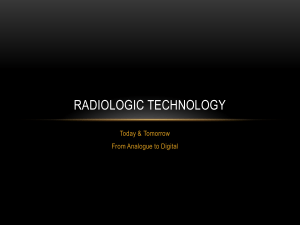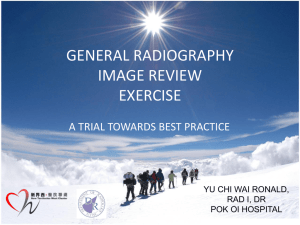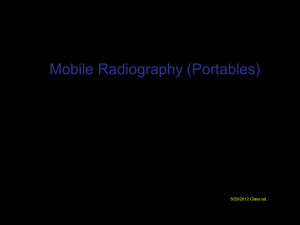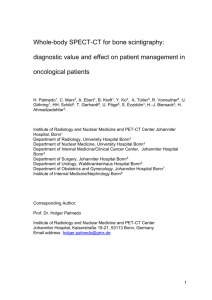Ch. 20-Avian and Exotic Radiography
advertisement
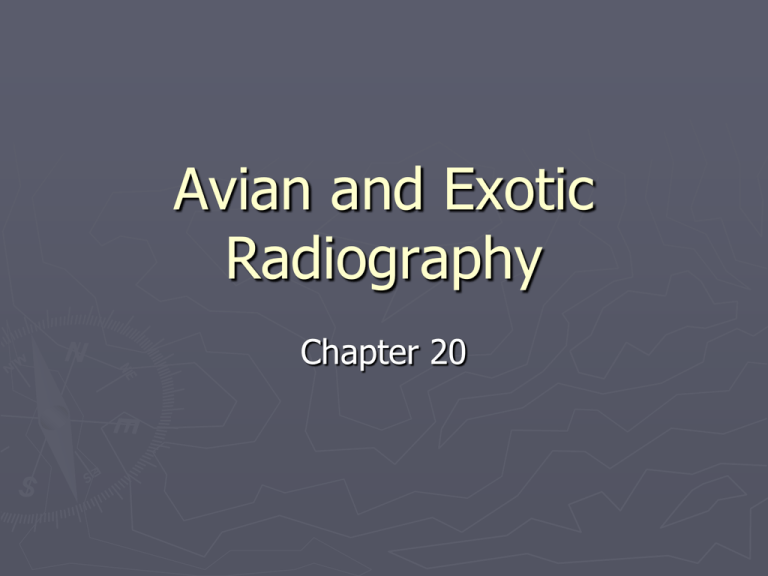
Avian and Exotic Radiography Chapter 20 Introduction ► Exotic pets have become increasingly prevalent in last few years. ► Caused an increase for need of diagnostic technique and equipment. ► All principles for companion animal radiography can be applied to exotics and avian radiography. Special Considerations ► Equipment Essentially same as for companion animal radiography. A high mA x-ray machine is generally recommended to allow for shorter exposure times. Maximum kVp is less important for avian and exotic radiography than for domestic animal radiography. ► Exposure Factors Not usually measured with caliper. Exposure factors are chosen according to the species and general size of the patient. Even with the same thickness, birds require less exposure than reptiles. ► Patient Restraint 3 types of restraint are used for avian and exotic patients during radiography. ► 1. Manual Physically holding of the animal ► 2. Physical Involves the use of devices to aid in restraint. Should only be used in animals that are not prone to self-trauma ► 3. Chemical Sedation Head and torso are restrained first, then the wings, and the legs last. Avian Radiography ► Whole Body Ventrodorsal View Positioned on back. Physical restraint is preferred. ► Whole-Body Lateral View Placed in right lateral recumbency with wings pulled back. ► Wing-Caudocranial View Manual positioning is required due to awkward position of the patient. Bird is held upside down and body is perpendicular to the cassette. ► Gastrointestinal Contrast Study Same general principles as those found in companion animals. Rodent Radiography ► Whole-Body Dorsoventral View Can be placed in a positioning device Can secure to cassette with tape In rabbits and guinea pigs can be positioned the same as a small domestic animal. ► Whole-Body Lateral View Same as dorsoventral or that of a companion animal. Reptile radiography ► Turtle Whole-body dorsoventral view ► Turtle is turned on the back and then returned to ventral side. Turtle will naturally extend legs and this is when exposure should be taken. ► Minimal restraint is required. ► View should include entire body. Whole-body lateral view ► Turtle is placed on side and attached to wood or plastic rack. Whole-body craniocaudal view ► X-ray beam is through front of turtle ► Lizard Whole-body dorsoventral view ► Can be secured with tape with minimal restraint. ► X-ray beam is directed vertically through the back of the patient. Whole body lateral view ► Placed ► in right lateral recumbency against the cassette. Snake Whole-body dorsoventral View ► Can be placed in cardboard or radiolucent plastic box. ► Can be placed in long radiolucent plastic tube with ends plugged. ► If radiographing in segments, then make sure to label the segments. Whole-body lateral view ► Can use physical or manual restraint Fish Radiography ► Dorsoventral and Lateral Whole-Body view Can be challenging because need water to breathe. Can be placed in plastic bag and then placed on top of cassette.
